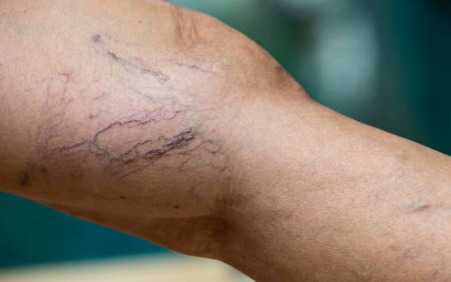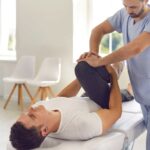Varicose veins, also called varicosities, occur when veins become enlarged, twisted, and visible beneath the skin’s surface. These veins, often appearing on the legs, can cause discomfort and often indicate underlying circulatory issues. Understanding the key signs and associated risk factors is fundamental to detecting and addressing varicose veins. Here are the signs of varicosities:
Bulging and Twisted Veins
One of the most noticeable signs of varicosities is bulging, twisted veins. These veins are commonly visible just beneath the skin and often take on a blue or dark purple color. This characteristic appearance is due to veins that have become enlarged due to weakened valves, which cause blood to pool rather than flow efficiently back to the heart. These visible veins are often found on the legs and may shift in prominence when standing versus lying down.
Aching and Heavy Legs
A consistent aching sensation or a feeling of heaviness in the legs can also signify varicose veins. These symptoms often worsen after standing or sitting for extended periods. This is because prolonged posture can cause extra strain on the veins. The discomfort may feel more pronounced at the end of the day, especially in occupations or daily routines involving spending significant time on one’s feet. This heaviness indicates that the veins struggle to circulate blood efficiently.
Swelling in the Feet and Ankles
Swelling around the feet and ankles is another common symptom. This occurs when fluid builds up in the lower extremities due to restricted blood flow. The swelling may be mild initially, but it may become more noticeable as the condition progresses. Observing persistent or recurring swelling helps identify venous issues.
Itching and Throbbing
Individuals with varicose veins may also experience itching or throbbing sensations in the legs. The itching often occurs around the site of the affected veins and is sometimes mistaken for dry skin or a minor irritation. Throbbing, on the other hand, is a result of pressure within the vein. These recurring sensations may become more distracting over time and can impact comfort levels during daily activities.
Skin Discoloration Near the Veins
Skin discoloration is a sign worth noting if varicosities are suspected. The skin around the affected veins can take on a reddish, brownish, or bluish tone. Over time, the surrounding skin may become dry or hard, and in some cases, ulcers may develop if the condition worsens without intervention. Observing these changes in skin appearance is helpful for recognizing the progression of vascular issues.
Risk Factors for Varicose Veins
Carrying extra weight, such as being overweight or obese, adds pressure to the veins in the legs. Age-related changes, such as being over 50, increase susceptibility as vein valves weaken over time. Hormonal fluctuations due to pregnancy, menopause, or hormonal therapy can also elevate risk. Leading a sedentary lifestyle or having a personal or family history of vascular problems may also contribute to the development of varicosities.
Explore Treatment Options for Varicose Veins
Detecting varicosities early is key to preventing further complications. Effective treatment options range from lifestyle modifications, such as regular exercise and maintaining a healthy weight, to medical procedures like sclerotherapy or phlebectomy. If you suspect you have varicose veins, consult a specialist to explore treatment options that align with your needs.









Leave a Reply